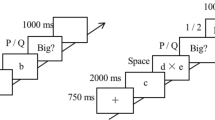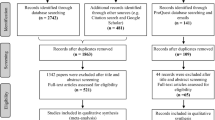Abstract
Math anxiety impedes performance in simple arithmetic tasks. Anxiety constrains working memory capacity and particularly the attentional functions of the central executive. The experiment reported here explored how interactivity mitigated the impact of math anxiety on the performance of elementary school students with simple additions. It manipulated two independent variables. The first was the length of the additions—involving either 7 or 11 number tokens (the value of the tokens ranged from 1 to 20). The other was the level of interactivity: in the low interactivity condition participants could not touch or point to the number tokens that configured the sums, and in a high interactivity condition participants could manipulate the tokens as they saw fit in deriving their answer. The length of the addition had an impact on accuracy, with longer sums leading to poorer performance. However, overall, performance in the high interactivity condition was superior, in terms of accuracy, absolute calculation error and efficiency, than performance in the low interactivity condition. Mathematics anxiety significantly predicted performance in the low interactivity condition, but not in the high interactivity condition. These results suggest that working memory resources are augmented through interactivity with the physical problem presentation, defusing the impact of anxiety on performance.

Similar content being viewed by others
References
Ashcraft, M. H. (2002). Math anxiety: Personal, educational, and cognitive consequences. Current Directions in Psychological Science, 11, 181–185.
Ashcraft, M. H. & Faust, M. W. (1994). Mathematics anxiety and mental arithmetic performance: An exploratory investigation. Cognition & Emotion, 8, 97–125.
Ashcraft, M. H. & Kirk, E. P. (2001). The relationships among working memory, math anxiety, and performance. Journal of Experimental Psychology: General, 130, 224–237.
Ashcraft, M. H. & Krause, J. A. (2007). Working memory, math performance, and math anxiety. Psychonomic Bulletin & Review, 14, 243–248.
Baddeley, A. (1992). Working memory. Science, 255(5044), 556–559.
Brown, M., Brown, P. & Bibby, T. (2008). “I would rather die”: Reasons given by 16-year-olds for not continuing their study of mathematics. Research in Mathematics Education, 10, 3–18.
Butler, R. (1999). Information seeking and achievement motivation in middle childhood and adolescence: The role of conceptions of ability. Developmental Psychology, 35, 146–163.
Carlson, R. A., Avraamides, M. N., Cary, M. & Strasberg, S. (2007). What do the hands externalize in simple arithmetic? Journal of Experimental Psychology: Learning, Memory, and Cognition, 33, 747–756.
Corbetta, M. & Shulman, G. L. (2002). Control of goal-directed and stimulus-driven attention in the brain. Nature Reviews Neuroscience, 3, 201–215.
Derakshan, N. & Eysenck, M. W. (2009). Anxiety, processing efficiency, and cognitive performance. European Psychologist, 14, 168–176.
Eccles, J., Adler, T. F., Futterman, R., Goff, S. B., Kaczala, C. M., Meece, J. & Midgley, C. (1983). Expectancies, values and academic behaviors. In J. T. Spence (Ed.), Achievement and achievement motives (pp. 95–121). San Francisco: W. H. Freeman.
Engle, R. W. (2002). Working memory capacity as executive attention. Current Directions in Psychological Science, 11, 19–23.
Eysenck, M. W. & Calvo, M. G. (1992). Anxiety and performance: The processing efficiency theory. Cognition & Emotion, 6, 409–434.
Eysenck, M. W., Derakshan, N., Santos, R. & Calvo, M. G. (2007). Anxiety and cognitive performance: Attentional control theory. Emotion, 7, 336–353.
Frank, M. & Barner, D. (2012). Representing exact number visually using mental abacus. Journal of Experimental Psychology: General, 141, 134–149.
Friedman, N. P. & Miyake, A. (2004). The relations among inhibition and interference control functions: A latent-variable analysis. Journal of Experimental Psychology: General, 133, 101–135.
Geary, D. C. & Widaman, K. F. (1992). Numerical cognition: On the convergence of componential and psychometric models. Intelligence, 16, 47–80.
Hembree, R. (1990). The nature, effects, and relief of mathematics anxiety. Journal for Research in Mathematics Education, 21, 33–46.
Kirsh, D. (1995). Complementary strategies: Why we use our hands when we think. In Proceedings of the Seventeenth Annual Conference of the Cognitive Science Society (pp. 212–217). Mahwah: Lawrence Erlbaum Associates.
Kirsh, D. (2013a). Embodied cognition and the magical future of interaction design. ACM Transactions on Computer-Human Interactions, 20(1), 1–30.
Kirsh, D. (2013b). Thinking with external representations. In S. J. Cowley & F. Vallée-Tourangeau (Eds.), Cognition beyond the brain: Interactivity, cognition and human artifice (pp. 171–194). Dordrecht, The Netherlands: Springer.
Kirsh, D. & Maglio, P. (1994). On distinguishing epistemic from pragmatic action. Cognitive Science, 18, 513–549.
Krinzinger, H., Kaufmann, L. & Willmes, K. (2009). Math anxiety and math ability in early primary school years. Journal of Psychoeducational Assessment, 27, 206–225.
LeFevre, J., DeStefano, D., Coleman, B. & Shanahan, T. (2005). Mathematical cognition and working memory. In J.I.D. Campbell (Ed.), Handbook of Mathematical Cognition (pp. 361–378). New York, NY: Psychology Press.
Logie, R. H., Gilhooly, K. J. & Wynn, V. (1994). Counting on working memory in arithmetic problem solving. Memory & Cognition, 22, 395–410.
Lyons, I. M. & Beilock, S. L. (2012). Mathematics anxiety: Separating the math from the anxiety. Cerebral Cortex, 22, 2102–2110.
Ma, X. & Xu, J. (2004). The causal ordering of mathematics anxiety and mathematics achievement: A longitudinal panel analysis. Journal of Adolescence, 27, 165–179.
Mattarella-Micke, A., Mateo, J., Kozak, M. N., Foster, K. & Beilock, S. L. (2011). Choke or thrive? The relation between salivary cortisol and math performance depends on individual differences in working memory and math-anxiety. Emotion, 11, 1000–1005.
Miller, H. & Bichsel, J. (2004). Anxiety, working memory, gender, and math performance. Personality and Individual Differences, 37, 591–606.
Miyake, A., Friedman, N. P., Emerson, M. J., Witzki, A. H., Howerter, A. & Wager, T. D. (2000). The unity and diversity of executive functions and their contributions to complex “frontal lobe” tasks: A latent variable analysis. Cognitive Psychology, 41, 49–100.
Ramirez, G., Gunderson, E. A., Levine, S. C. & Beilock, S. L. (2013). Math anxiety, working memory, and math achievement in early elementary school. Journal of Cognition and Development, 14, 187–202.
Richardson, F. C. & Suinn, R. M. (1972). The Mathematics Anxiety Rating Scale: Psychometric data. Journal of Counseling Psychology, 19, 551–554.
Sarason, I. G. (1988). Anxiety, self-preoccupation and attention. Anxiety Research, 1, 3–7.
Seyler, D. J., Kirk, E. P. & Ashcraft, M. H. (2003). Elementary subtraction. Journal of Experimental Psychology: Learning, Memory, and Cognition, 29, 1339–1352.
Smith, A. (2004). Making mathematics count: The report of Professor Adrian Smith’s inquiry into post-14 mathematics education. Retrieved fromhttp://dera.ioe.ac.uk/4873/1/MathInquiryFinalReport.pdf.
Suinn, R. M., Taylor, S. & Edwards, R. W. (1988). Suinn mathematics anxiety rating scale for elementary school students (MARS-E): Psychometric and normative data. Educational and Psychological Measurement, 48, 979–986.
Tobias, S. & Weissbrod, C. (1980). Anxiety and mathematics: An update. Harvard Educational Review, 50, 63–70.
Vallée-Tourangeau, F. (2013). Interactivity, efficiency, and individual differences in mental arithmetic. Experimental Psychology, 60, 302–311.
Vallée-Tourangeau, F., Sirota, M. & Villejoubert, G. (2013). Reducing the impact of math anxiety on mental arithmetic: The importance of distributed cognition. In M. Knauff, M. Pauen, N. Sebanz & I. Wachsmuth (Eds.), Proceedings of the Thirty-Fifth Annual Conference of the Cognitive Science Society (pp. 3615–3620). Austin, TX: Cognitive Science Society.
Wechsler, D. (1991). WISC-III: Wechsler intelligence scale for children. San Antonio, TX: Psychological Corporation.
Wigfield, A. & Meece, J. L. (1988). Math anxiety in elementary and secondary school students. Journal of Educational Psychology, 80, 210–216.
Wilson, R. A. & Clark, A. (2009). How to situate cognition: Letting nature take its course. In P. Robbins & M. Aydede (Eds.), The Cambridge handbook of situated cognition (pp. 55–77). Cambridge, England: Cambridge University Press.
Yantis, S. (1998). Control of visual attention. Attention, 1, 223–256.
Young, C. B., Wu, S. S. & Menon, V. (2012). The neurodevelopmental basis of math anxiety. Psychological Science, 23, 492–501.
Author information
Authors and Affiliations
Corresponding author
Rights and permissions
About this article
Cite this article
Allen, M., Vallée-Tourangeau, F. Interactivity Defuses the Impact of Mathematics Anxiety in Primary School Children. Int J of Sci and Math Educ 14, 1553–1566 (2016). https://doi.org/10.1007/s10763-015-9659-9
Received:
Accepted:
Published:
Issue Date:
DOI: https://doi.org/10.1007/s10763-015-9659-9




